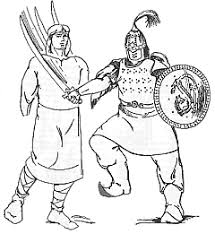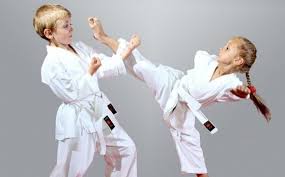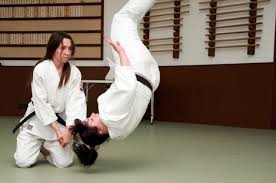FROM THE HISTORY OF THE SLAVIC-GORITSKAYA FIGHT
 The origin of the Slavic martial arts schools dates back to about the 3rd – 2nd centuries. BC e. In Russia, fighting traditions have a long history. At the same time, an entertaining, playing folk tradition and martial arts developed. For all their differences between these areas, there was an obvious connection: folk fun was a kind of school for the initial training of the future soldier.
The origin of the Slavic martial arts schools dates back to about the 3rd – 2nd centuries. BC e. In Russia, fighting traditions have a long history. At the same time, an entertaining, playing folk tradition and martial arts developed. For all their differences between these areas, there was an obvious connection: folk fun was a kind of school for the initial training of the future soldier.
The most ancient type of struggle in Russia – the bear fight – is rooted in the pre-Christian era, when the bear was considered a totem animal and protector of the genus. (The ritual fights conducted on the field were designed to drive away evil spirits from the crops.) It is believed that from a bear fight, such types of popular competitive culture as wrestling in armfuls, in fights, in the cross, on the collar, etc.
Belt wrestling, borrowed from Turkic peoples, has also become very widespread (it is now recognized as an official sport).
Along with the struggle in our country, various types of fisticuffs developed with accented striking techniques: himself, the crowd against the crowd, wall to wall, coupler – dump, etc.
In Russia, judicial fights and mortgages (“prize” battles) were practiced. A significant layer of national military culture was formed thanks to the skills of the military estate – combatants, boyars, governor. The training system for Russian soldiers included, among other things, shooting, throwing knives, fencing on all types of knives, wrestling in armor, etc.
Berserkers (birserki) or yarygs (ardent warriors) occupy a special place in the history of Russian martial arts. Such lone warriors (which existed among many Indo-European peoples), thanks to their special skills, could withstand an entire enemy detachment. In a state of passion, an ardent warrior was insensitive to pain and could overcome obstacles inaccessible to a person in a normal emotional state.
Over time, when firearms took the first place, hand-to-hand combat as an area of professional skills began to lose its former significance, but the popular competitive culture, despite numerous prohibitions, continued to develop.
The Slavic-Goritsky struggle as such is the author’s style of Alexander Konstantinovich Belov, which originated in the early 1980s. The name of the struggle comes from ritual fights on the mounds of fallen soldiers – goritsy. A.K. Belov (military name – Selidor) studied folk rites, games and traditions in expeditions to various regions of Central Russia, the Urals, Perm, Siberia and the North. The main material was collected through personal meetings and correspondence with people who know the national traditions well (in historical documents there is little mention of wrestling fights: the Christian church waged an implacable fight against pagan traditions, an integral part of which are fighting games).
It cannot be argued that the Slavic-Goritsky struggle is a truly recreated concrete martial art style that existed in some historical period. It incorporates the ancient techniques of various competitive and combat types of Russian wrestling, the mention of which was found, and modern reconstructed modifications.
In 1991, the first All-Union seminar on the Slavic-Goritsky struggle was held in Kineshma. Since 1994, championships of Russia have been regularly held, as well as competitions of regions, cities, etc. In 1996, the Federation of the Slavic-Goritsky Wrestling of Russia was founded (President – A. Belov), which unites a network of sports and methodological schools, clubs and regional unions. The Central School of the SGB Federation is the Svarog Club. The Federation holds various competitions, organizes workshops and schools of sportsmanship, trains masters, trainers and instructors in the Slavic-Goritsky wrestling. The rating of the strongest wrestlers of Russia is compiled annually.
Currently, the Slavic-Goritsky wrestling is being studied and developed not only in Russia, but also in the CIS countries, as well as abroad: for example, Bulgarian championships are held, seminars are regularly held in Italy, Japanese martial arts specialists have shot a training film.




